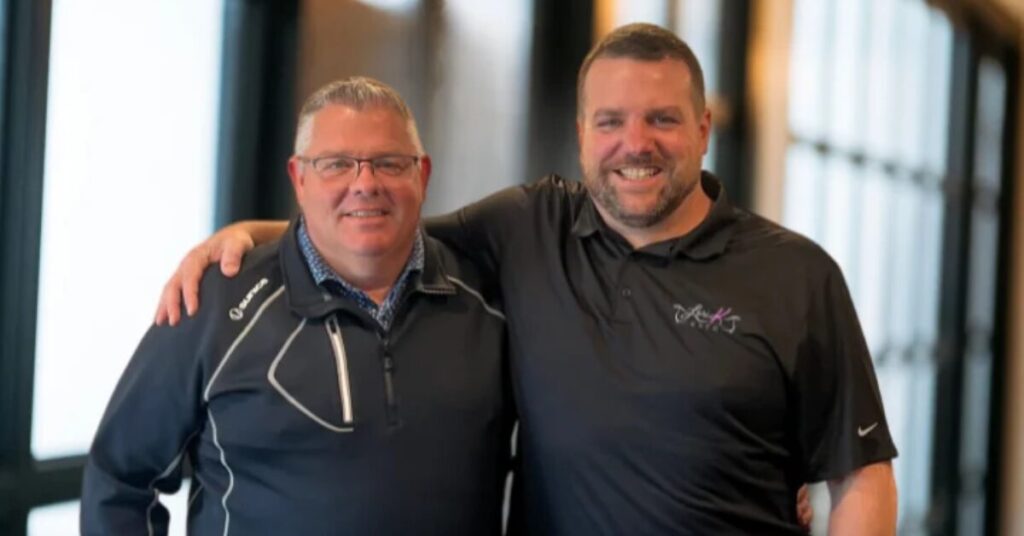Surviving the downturn in construction and real estate.
by Bob Kronemyer
Weathering the devastating economic downturn and subsequent anemic growth cycle has not been easy for most industries, but the construction and real estate sector has been particularly hit hard. To survive, several regional firms have sharpened their pencils through downsizing and concentrating on strategic planning. Maintaining a positive attitude, servicing the customer, bidding on smaller or different kinds of projects and expanding geographic reach are also vital.
“The first key is to right size your staff,” says Jon Gilmore, president and CEO of Tonn and Blank Construction LLC in Michigan City. “However, you still need to keep your key people. What we're seeing, though, is that some of the companies that made it through the economic downturn are now having problems trying to grow again. Fortunately, we kept our key people all the way through the downturn. In other words, we trimmed the fat but not the meat.”

Gilmore believes that this delicate balancing act will prove to be the correct move if the construction industry picks up because, in his opinion, “one of the biggest mistakes people made during the great times is that they thought they would never end.” Likewise, they thought the bad times “would last forever.”
The large general contracting and construction management firm has zero debt, yet cash in the bank. “It's much easier to survive when you don't have bank payments and worrying about if the bank is going to call in a note,” Gilmore says. “We saw several contractors go out of business because the bank called in their notes. They had to close their doors that day.”
Among the company's commercial, institutional and industrial projects over the past five years are three replacement hospitals: St. Joseph Regional Medical Center in Mishawaka, St. Elizabeth hospital in Lafayette and St. Francis hospital in Indianapolis. A new cancer center in Michigan City is also slated to open this summer.
Gilmore expects 2013 will be the best year for his company since 2010. “There is a lot of pent-up demand,” he observes. Meanwhile, the firm is intent on servicing its customers and letting them know they are still around. “We've also done a lot of strategic planning with our customers, so when the day comes to start building, we don't have to spend a lot of time on that portion of the project,” Gilmore says. Such a strategy quickens the entire building timeline.
To survive, “the first thing is to trust God, the second thing is don't panic and the third thing is to keep working,” says Sarah Oudman, owner of Treasure Homes Inc. in Wheatfield, Jasper County, although most of its residential construction is in Porter County, ranging from $215,000 to $325,000. Founded in 2009, while the market was slowing down, the company has completed one new home in Burns Harbor in 2010 and one total remodel near Rolling Prairie in 2011. The company expects to break ground soon on four new homes (three in Burns Harbor, one in Aberdeen).
Reducing nonessential expenses such as office equipment and delaying software purchases has helped keep Treasure Homes afloat. “These investments make your life easier, but are not 100% necessary,” Oudman points out. And during slow periods, concentrating on internal recordkeeping and improving job costing can enhance the overall efficiency of a business. “This is a way to stay productive and keep you on your edge,” Oudman says. Increasing one's knowledge and skills are also beneficial.
Treasure Homes makes an effort to continually meet people. “Sometimes, when there is a slow period, you tend to isolate yourself. But we have found that participating in various organizations, like the chamber of commerce, provides networking opportunities,” says Oudman, who suggests that builders talk to people about what is new and exciting in the industry.
Oudman predicts gradual improvement in residential construction. “Certainly the low interest rates on mortgages are encouraging,” she says. “I also believe that more people are becoming aware of the advantages that can be built into a new home as opposed to improving an existing home.” These advantages include energy and water efficiency and improved indoor air quality (e.g., reduced allergies) for a healthier home.
Dennis and Sons Builders in Valparaiso handles both residential and commercial projects, which up until four years ago “served us well because when the commercial side was down, residential real estate was usually hot, and when the residential side was down, normally the commercial side was good,” says owner Dennis Seramur. “By keeping a mix, we were lucky to stay busy throughout those years. But then in 2008, both sides of the business crashed and neither one has recovered.”
The last major project for the general contractor was constructing the railroad depot at Taltree Arboretum & Gardens near Valparaiso, which was completed in 2008.
Seramur characterizes the current building environment as “extremely slow.” Still, his company has survived by “taking any type of small job we can get our hands on,” he says. These are projects that in better times the company would typically refer to a smaller contractor or not accept at all. The largest project the builder has completed this year is a $30,000 remodeling of a Chesterton home that had been in foreclosure.
The general contractor has laid off people, reduced coffee consumption and maintained a lower temperature in the winter at its facility to decrease cost. “We've also been spending our savings, using a line of credit and some of our retirement to keep the doors open, hoping that things will turnaround,” Seramur explains.
Simply having a positive attitude can go a long way in creating goodwill. “Come in with a smile every morning and find a way to solve a customer's problem,” says Jeff Brant, a partner at Brant Construction LLC in Schererville, Lake County, a full-service real estate company.
The company has been able to reduce some of its overhead expenditures; foremost, shaving the number of employees. Curtailing office space and investing in more technology (e.g., updating software) has also allowed for increased efficiency. Having a property management company that owns real estate generates revenue as well.
Earlier this year, Brant Construction completed a roughly 9,000-square-foot fabricating and manufacturing facility for Quintel Inc. (heat exchangers) in Schererville, Lake County. And this summer, a 35-bed, off-site student housing project at the University of Notre Dame opened. The company is also in the process of remodeling the Inn of Hammond in Hammond.
Larson-Danielson Construction Company Inc. in LaPorte has seen a major decline in business, starting about 2009. “In fact, we had several clients who stopped projects in progress,” recalls president Timothy Larson. Since then, the balance sheet has improved somewhat, “but not to the level it was back in 2006 and 2007.”
The general contractor for commercial, institutional and industrial has maintained its viability in part by more aggressively pursuing infrastructure projects, namely bridges (both state and county). The company has also marketed itself to a wider geographic area. Adjusting expenses to revenues have included letting go employees or trimming hours to part time.
In February, the company completed a new 200,000 square foot warehouse/main office for domestic beer-distributor North Coast Distributing Inc. in Valparaiso and last fall the new Walmart Supercenter in Hammond. Ongoing projects include improvements to spectator areas (additional seating) and the plaza at Coveleski baseball stadium in South Bend and a new Toyota dealership in Schererville.
“We are working hard to improve and maintain our competitive edge through increased productivity,” Larson says. This consists primarily of ensuring that field personnel have all the correct information. “We do our plan-ahead work so that work flows smoothly and we have fewer interruptions,” Larson conveys. “Interruptions in the construction business cost time and money.”



